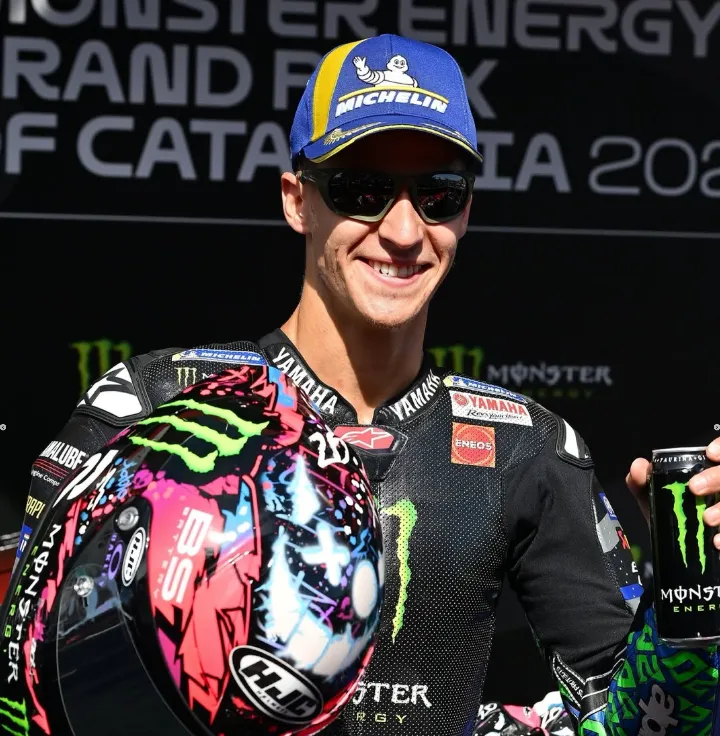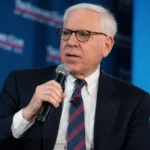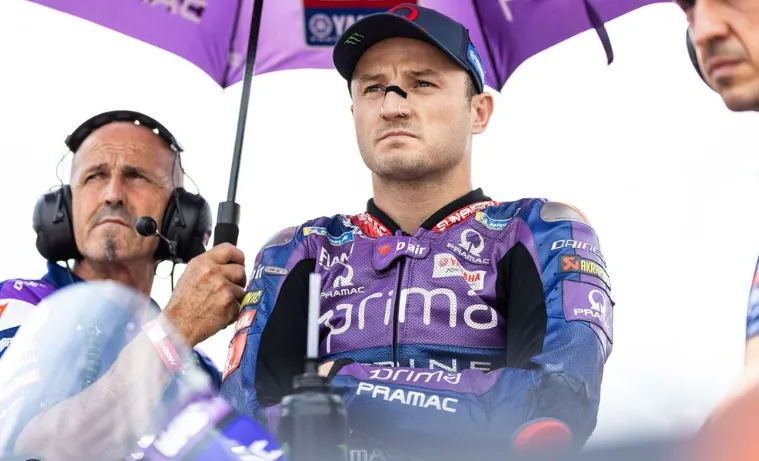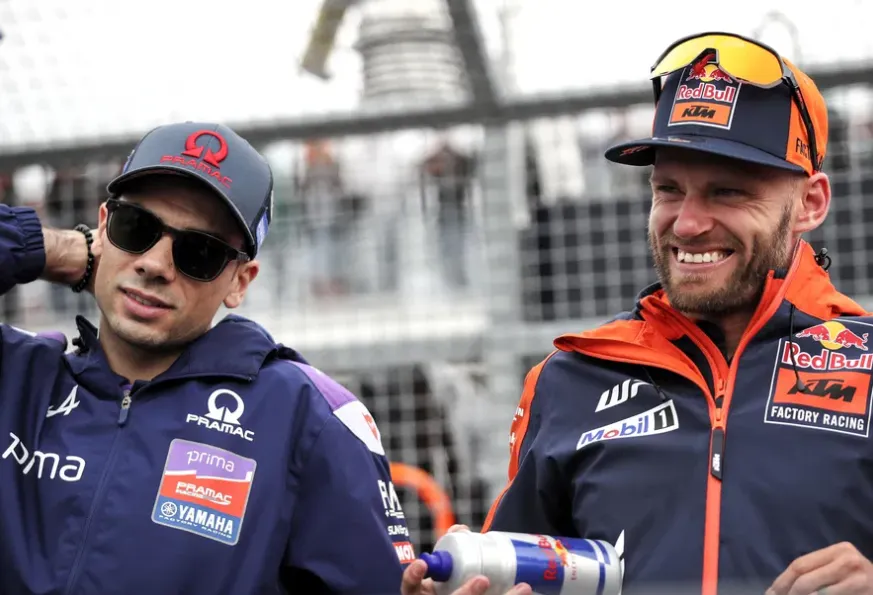

Fabio Quartararo Could Lose Everything if He Rides Yamaha’s V4 in 2025
The 2025 MotoGP season has been turbulent for Yamaha, a manufacturer that once dominated the championship but has since struggled to keep pace with its European rivals. With the San Marino Grand Prix set to host the first official appearance of Yamaha’s long-awaited V4 engine, the paddock is buzzing with speculation. While the debut of this new engine represents a critical moment in Yamaha’s quest for revival, it also raises a fascinating question: what happens if Fabio Quartararo, their star rider, chooses to race with it?
On the surface, it sounds like the obvious next step. Quartararo has already tested the V4 at Barcelona, and with Yamaha languishing at the bottom of the constructors’ standings, experimenting with the new technology in race conditions could accelerate development. Yet, the rules make such a move risky. If Quartararo were to line up on the grid with the V4 engine, he could find himself in breach of MotoGP’s strict regulations, opening the door to a potential disqualification.
The V4 Engine: Yamaha’s Gamble for the Future
For decades, Yamaha has been synonymous with the inline-four configuration, a layout that helped power legends like Valentino Rossi, Jorge Lorenzo, and eventually Quartararo himself to success. However, as Ducati, Aprilia, KTM, and Honda developed increasingly powerful and adaptable V4 engines, Yamaha found itself stuck with a concept that had seemingly reached its developmental ceiling.
The switch to the V4 is therefore not just a technical upgrade; it is a philosophical shift. Yamaha hopes that this configuration will deliver more horsepower, better stability under braking, and improved acceleration off the corner — three areas where they have consistently fallen behind Ducati and Aprilia in recent years. Engineers believe that adopting the V4 design is the only way to remain competitive at the very top level of MotoGP.
For Quartararo, the stakes are even higher. His 2021 championship win was proof of his talent and Yamaha’s potential, but in the seasons since, he has watched rivals storm past him with superior machinery. The Frenchman has been open about his frustration, hinting that his future in MotoGP might not include Yamaha unless major changes are made. The V4 project could be the lifeline that convinces him to stay.

Why Quartararo Cannot Simply Race the V4
The challenge lies in the regulations. Under MotoGP’s technical rules, full-time riders are allowed just two fairing updates per season. These fairings are critical, as they determine aerodynamics and cooling — both vital for performance and safety. Quartararo has already used his two allotted updates for 2025, meaning he cannot legally introduce another fairing design.
The problem? The new V4 engine requires its own unique fairing. The inline-four fairing is incompatible, which means that if Quartararo or any other full-time Yamaha rider were to adopt the V4 during a race weekend, they would immediately be in breach of the rules. That breach could lead to Yamaha being stripped of results or Quartararo himself being disqualified.
Wildcard riders like Augusto Fernandez, who will debut the V4 at Misano, are exempt from these limitations. This loophole allows Yamaha to gather data without risking penalties for their main riders. Similarly, official post-race test sessions — such as those scheduled in Emilia Romagna and Valencia later in the year — also provide opportunities for development without the threat of disqualification.
Would Yamaha Ever Risk a Disqualification?
Theoretically, Yamaha could take the gamble and field Quartararo on the V4 even if it means disqualification. With their constructors’ standings at rock bottom and little left to play for in terms of points, the argument could be made that the development benefits outweigh the short-term penalties. After all, seven full weekends of live race testing could be invaluable for refining the engine before its planned rollout in 2026.
However, this strategy comes with consequences. Disqualification is not just a statistic — it impacts Yamaha’s reputation, could anger sponsors, and might undermine Quartararo’s own confidence. Yamaha has long been a team associated with professionalism and respect for the rules, making it unlikely they will intentionally break them. More realistically, the manufacturer will restrict the V4 to Fernandez’s wildcard outings and designated test days until the end of the season.
How the V4 Performed in Early Testing
Much of the speculation about the V4 revolves around its early lap times. Reports suggest that during his Barcelona test, Quartararo was 1.5 seconds slower on the V4 compared to his qualifying times from the previous race weekend. On paper, that sounds like a disaster. But context is everything.
Track conditions in Barcelona during the test were far from ideal, and the engine itself is still in its infancy. Development is ongoing, and the engineers were likely focused on data gathering rather than outright pace. Yamaha insiders stress that the real question is not how fast the V4 is today but how competitive it can be by the start of the 2026 season, when the full switch is expected.
Interestingly, Jack Miller, who will join Pramac Yamaha in 2026, has reportedly heard “good things” about the new engine. Yamaha staff believe they have reached the limit of what the inline-four can deliver, and that a well-developed V4 will finally put them back in the same technological arena as Ducati and Aprilia.
Quartararo’s Body Language and the Pressure on Yamaha
Observers have noted that Quartararo has looked increasingly “defeated” during recent races. Once known for his fiery energy and relentless determination, the Frenchman has at times seemed resigned to battling for top-eight finishes rather than race wins. For a rider of his calibre, this is unacceptable.
The V4 project is as much about psychology as it is about engineering. By giving Quartararo hope for the future, Yamaha may reignite his passion and commitment to the project. Without it, the risk of losing him to another team grows by the day. The coming months could therefore determine not just the trajectory of Yamaha’s MotoGP program, but also the career path of one of the sport’s brightest stars.

The Bigger Picture: Yamaha’s Place in MotoGP
In recent years, Ducati has become the benchmark in MotoGP, with Aprilia and KTM also closing in. Honda, while struggling, remains committed to the V4 concept. Yamaha is the only manufacturer still clinging to the inline-four, and the results speak for themselves: a lack of straight-line speed, inconsistent cornering stability, and constant complaints from riders about acceleration out of turns.
The V4 represents Yamaha’s chance to catch up, but the process will take time. A rushed introduction in 2025 could create setbacks, while a careful, methodical development program may finally bring them back to the front of the grid in 2026. The question is whether Quartararo has the patience to wait.
Conclusion
The debut of Yamaha’s V4 engine at the 2025 San Marino Grand Prix marks the beginning of a potentially transformative era for the Japanese manufacturer. For Fabio Quartararo, the new engine could be the difference between staying loyal to Yamaha or seeking success elsewhere. Yet the very rules designed to keep MotoGP fair and balanced are also the reason why he cannot simply race with it today.
With his fairing updates already spent, adopting the V4 in competition would breach regulations and put him at risk of disqualification. For now, Quartararo must bide his time while Fernandez provides vital data as a wildcard. Yamaha’s engineers will continue their work in the background, hoping to deliver a competitive package by 2026.
The question remains: will Yamaha’s gamble on the V4 pay off in time to keep their star rider happy? Or will the wait prove too long for Quartararo, forcing him to look elsewhere? One thing is certain — the stakes have never been higher, and every decision made in the coming months will shape both Yamaha’s future and Quartararo’s legacy in MotoGP.


















